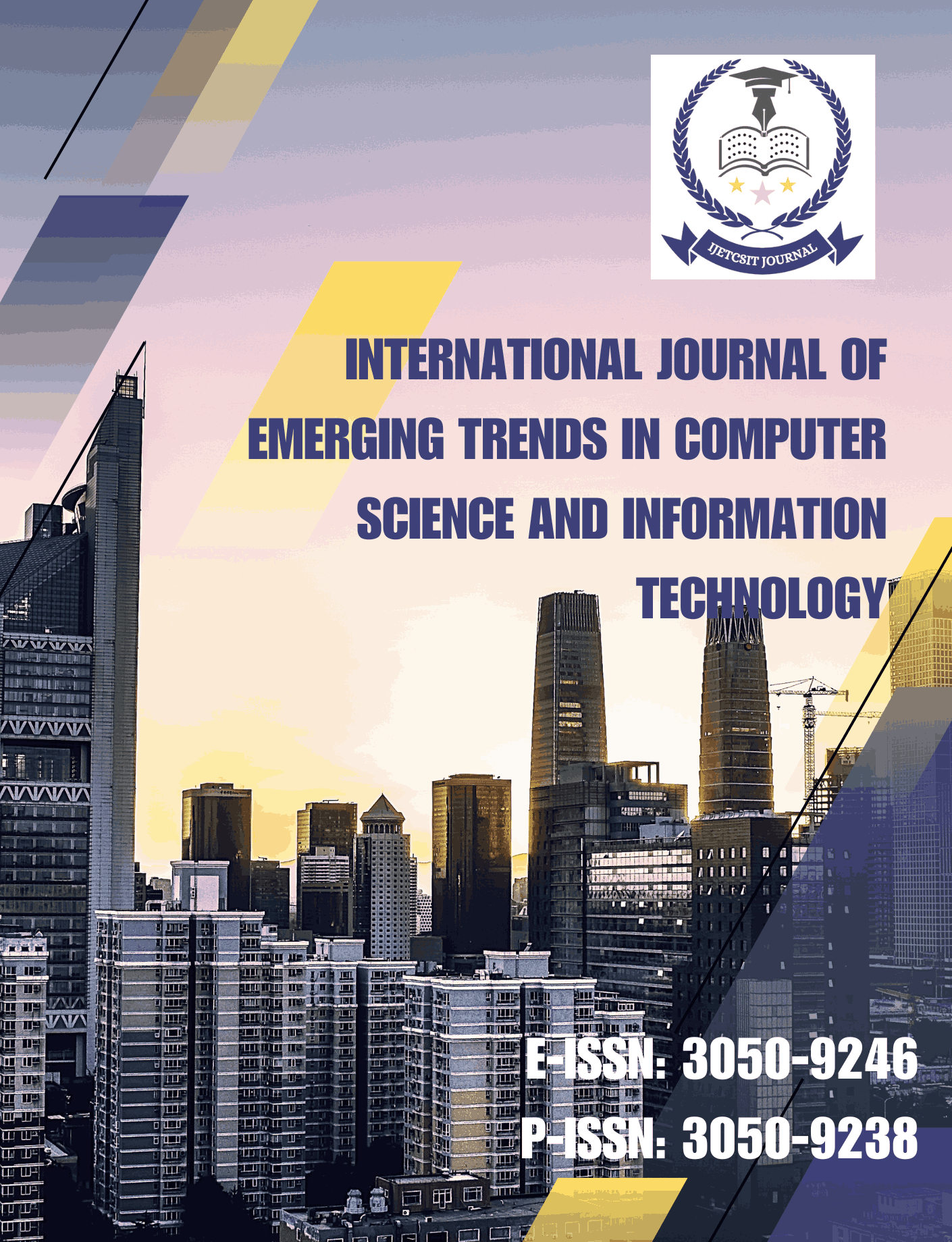Cloud Microservices for Secure Health Data Access
DOI:
https://doi.org/10.63282/3050-9246.IJETCSIT-V6I4P104Keywords:
Cloud Microservices, Health Data Security, Electronic Health Records (EHR), Zero-Trust Architecture, HIPAA ComplianceAbstract
Wellness systems are rapidly adopting cloud-native designs to increase the proportion of scalable, standardized, and high-performance applications. This enables them to quickly deploy applications that allow patients and employees to integrate multiple services or data pipes through well-defined functions easily. Computed using the ideas and principles that emerged as a result of the First World War, life-prolonging electronic medical interventions have been on the rise. However, this might also pose a significant danger to the patient’s private data. For that reason, this paper investigates the several patterns and mechanisms that should be installed in microservices to guarantee that the data is safe from outside manipulations. The regulatory requirements (HIPAA), the most appropriate API software used throughout the industry of cloud management systems (HCR), the service level standards (FHIR /SMART), how the services keep their messages secret (service mesh, mutual TLS), and finally, the security practice quality ideas (in transit and at rest encryption, trust certificate placement) have all been reviewed and compiled in this report. A step-by-step procedure to start implementing this method to secure a health-based cloud service has been included, along with the relevant proposed assessment. Furthermore, regarding the practicality of adhering to the prescribed guidelines, it’s essential to consider additional details alongside container management
Downloads
References
[1] Akerele, J. I., Uzoka, A., Ojukwu, P. U., & Olamijuwon, O. J. (2024). Improving healthcare application scalability through microservices architecture in the cloud. International Journal of Scientific Research Updates, 8(02), 100-109.
[2] Boda, V. V. R., & Immaneni, J. (2021). Healthcare in the Fast Lane: How Kubernetes and Microservices Are Making It Happen. International Journal of Emerging Research in Engineering and Technology, 2(3), 33-42.
[3] Bugshan, N., Khalil, I., Moustafa, N., & Rahman, M. S. (2021). Privacy-preserving microservices in industrial internet-of-things-driven smart applications. IEEE Internet of Things Journal, 10(4), 2821-2831.
[4] Calderón-Gómez, H., Mendoza-Pitti, L., Vargas-Lombardo, M., Gómez-Pulido, J. M., Rodríguez-Puyol, D., Sencion, G., & Polo-Luque, M. L. (2021). Evaluating service-oriented and microservice architecture patterns to deploy ehealth applications in cloud computing environment. Applied Sciences, 11(10), 4350.
[5] Contasel, C., Rughiniș, R. V., Trancă, D. C., & Tsurcanu, D. (2025). Enhancing e-Health cybersecurity and resilience: shifting from monolithic to microservices architecture. UPB Scientific Bulletin, Series C: Electrical Engineering and Computer Science, 21-34.
[6] de Alencar, A. V., Bezerra, M. M., Valadares, D. C., Santos, D. F., & Perkusich, A. (2023, March). An interoperable microservices architecture for healthcare data exchange. In International Conference on Advanced Information Networking and Applications (pp. 193-205). Cham: Springer International Publishing.
[7] Gómez-Pulido, J. M., & Vargas-Lombardo¹, M. (2024, October). Microservices Architecture to Improve. In Technologies and Innovation: 10th International Conference, CITI 2024, Guayaquil, Ecuador, November 11–14, 2024, Proceedings (Vol. 2276, p. 137). Springer Nature.
[8] Martin, J. (2025). Encryption in Transit in Healthcare SaaS: The Role of Mutual TLS. Available at SSRN 5131928.
[9] Mavrogiorgou, A., Kleftakis, S., Mavrogiorgos, K., Zafeiropoulos, N., Menychtas, A., Kiourtis, A., ... & Kyriazis, D. (2021, June). beHEALTHIER: A microservices platform for analyzing and exploiting healthcare data. In 2021 IEEE 34th international symposium on computer-based medical systems (CBMS) (pp. 283-288). IEEE.
[10] Nam, T. B., Khiem, H. G., Triet, M. N., Hong, K. V., Khoa, T. D., Bao, Q. T., ... & Luong, H. H. (2023, September). SPaMeR: securing patient medical records in the cloud-a microservice and brokerless architecture approach. In International Conference on Web Services (pp. 32-46). Cham: Springer Nature Switzerland.
[11] Jamil, F., Qayyum, F., Alhelaly, S., Javed, F., & Muthanna, A. (2021). Intelligent Microservice Based on Blockchain for Healthcare Applications. Computers, Materials & Continua, 69(2).
[12] Pfleger, S. (2024). Data Security in Microservice-Systems (Doctoral dissertation, University of Applied Sciences).
[13] Prakash, C. (2024). Zero-Trust Architecture Approach to Secure Microservices for the Healthcare Insurance Industry. University of the Cumberlands.
[14] Ramalingam, B. C. (2025). Revolutionizing Pharmaceutical Data Transformation with Microservices Architecture. IJSAT-International Journal on Science and Technology, 16(1).
[15] Sheffield, N. C., Bonazzi, V. R., Bourne, P. E., Burdett, T., Clark, T., Grossman, R. L., ... & Yates, A. D. (2022). From biomedical cloud platforms to microservices: next steps in FAIR data and analysis. Scientific Data, 9(1), 553.





